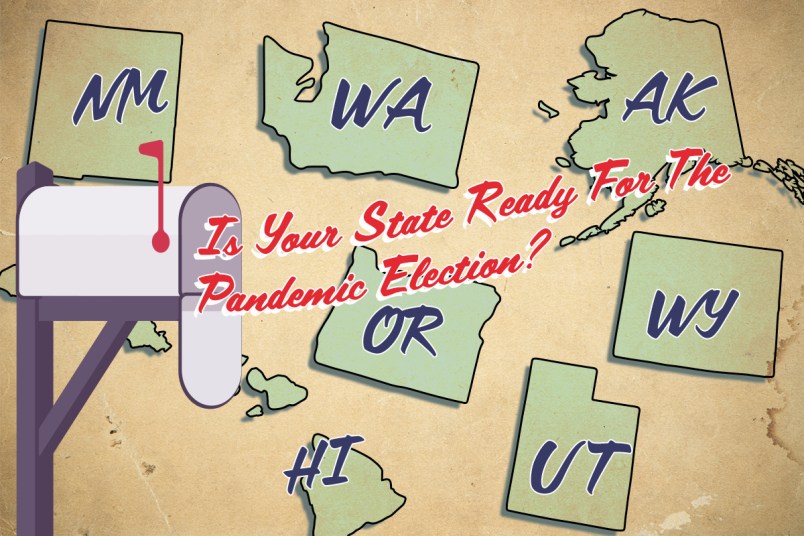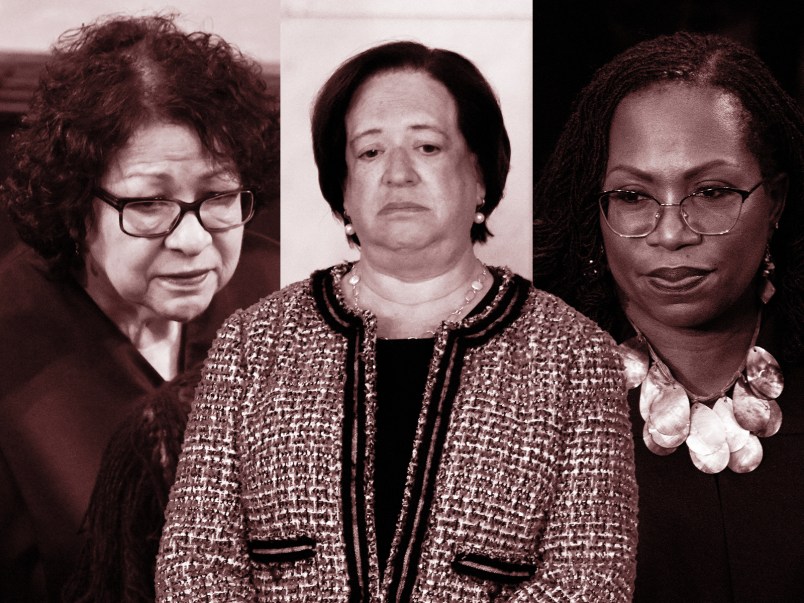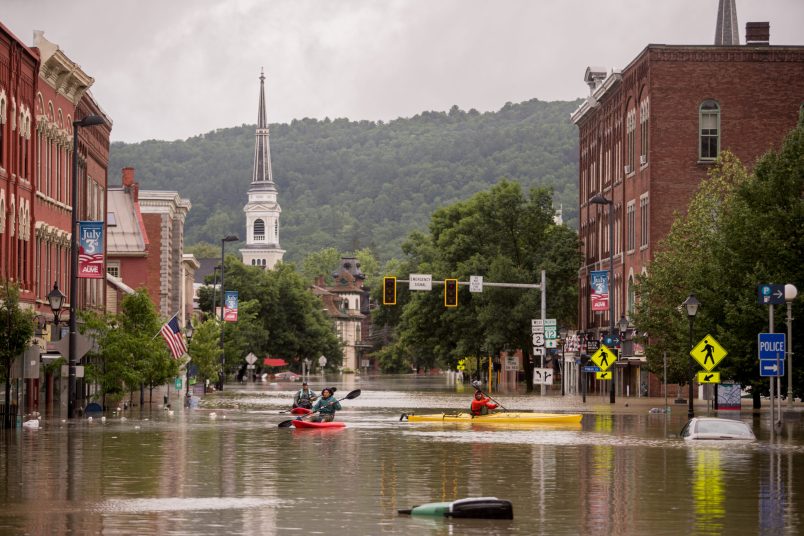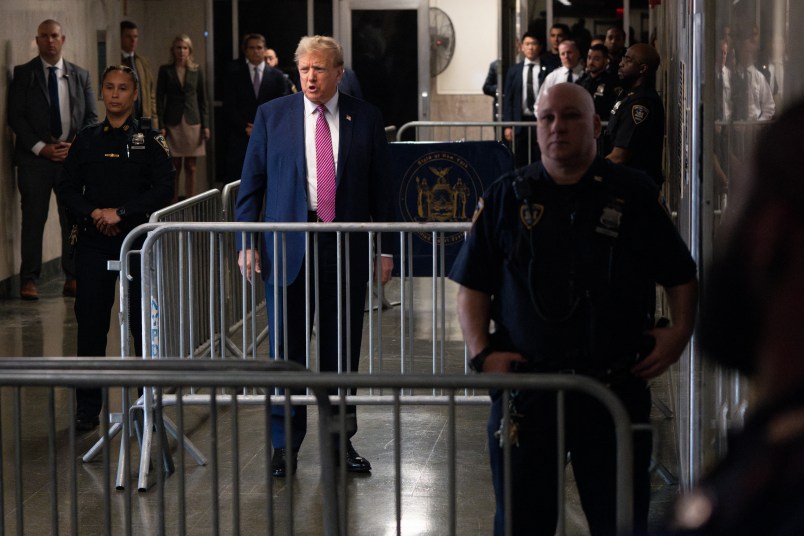The election is less than two weeks away now. Millions of Americans have already voted. And COVID-19 case counts are, once more, climbing.
This week, we have our final installment in our series of state-by-state looks at how election officials are trying to keep voting safe in the pandemic, and the chaos that might ensue in this extremely unusual general election.
Our last tranche of states includes: Alaska, Hawaii, New Mexico, Oregon, Utah, Washington and Wyoming.
In addition to this week’s states, check out the other states we’ve examined.
Alaska
A state where the huge distances and vast rural areas have already resulted in a unique system of election administration, Alaska can look forward to an election with an expanded absentee voting regime but one likely coupled with delayed results and rejected ballots.
Control of the state’s legislature is up for grabs this year, while Sen. Dan Sullivan (R-AK) faces a tighter-than-expected re-election battle and the state’s support for President Trump has been weaker in polling than anticipated. To prepare for voting during the pandemic, Alaska made the controversial decision to send absentee ballot applications to voters 65 and older amid opposition from state Democrats who wanted the program expanded to all Alaskans.
Challenges to expand that policy to the rest of the state’s registered voter population failed in federal court in September. Alaskans do benefit from an online, no-excuse-required absentee ballot request system that debuted this year.
But the state offers no opportunity to fix mistakes in mail-in ballots, per a recent court decision, though at least one onerous absentee voting requirement — a witness signature — has been struck down. The state’s primary offers a look at what may take place come November: amid a flood of absentee ballots, the state took more than a week to count the votes, changing the projected results of races across the state. More than 1,240 votes in the primary were rejected, out of a record 62,000 absentee votes cast. Lt. Gov. Kevin Meyer (R), the official overseeing elections in Alaska, has said that the state is having trouble signing up poll workers to tally votes come November, creating a recipe for what could be long lines and a delayed count.
Hawaii
Last year Hawaii became the last state to institute universal vote-by-mail elections before COVID-19 forced several other states to follow suit. The state, reports noted at the time, has long struggled with low voter turnout.
In August, in the middle of a pandemic and during its first real test of universal vote-by-mail, Hawaii saw record primary turnout and 99% of ballots cast by mail: More than half of the state’s registered voters participated, and the state surpassed its previous primary record — set in 1994 — by a nearly 100,000-vote margin, The Honolulu Star-Adviser reported.
Already, more than 26% of the electorate has cast their ballots for the general election, Hawaii News Now reported this week.
Some aspects of the state’s elections laws are more restrictive than in other states: Ballots must reach election officials by Election Day, rather than simply being postmarked in time, leaving late-voting Hawaiians vulnerable to mail delays. More than 900 ballots weren’t counted in the primaries for that reason, Honolulu Civil Beat reported.
And whereas the state had hundreds of polling places in years past, it now has just eight in-person voter service centers, meaning Hawaiians who want to register to vote on Election Day or otherwise need some sort of in-person assistance will feel the squeeze. Dozens of “places of deposit” — drop boxes — help alleviate some of the pressure for voters who simply want to drop their ballot off.
“In a perfect world, we’d have one [drop box] every 5 miles,” Hawaii County Clerk John Henricks said at a county council meeting last month, as quoted by the Civil Beat. “But there’s so much more that goes into that. We want to make sure they’re secure, and I don’t think you ever want to sacrifice security for access.”
Other obstacles, such as those for homeless people and limited English proficient voters on the polyglottal islands, still remain.
Hawaii is expected to vote blue in the presidential election, as it has every year since 1988, and while incumbent Rep. Ed Case (D-HI) seems likely to be reelected, Rep. Tulsi Gabbard’s (D-HI) impending retirement opens the door to new blood in Congress: State Sen. Kai Kahele (D) announced his plans to run for Gabbard’s seat before she announced her own exit, and subsequently won the Democratic primary in a landslide. He’ll face off against Republican Joseph Akana for what’s considered a safely Democratic seat.
New Mexico
It’s a good thing that New Mexico’s legislature was able to salvage this summer a nearly-doomed bill to rework the state’s election rules for the pandemic. The state is in the midst of a troubling surge in COVID-19 transmission, just as ballot-casting is getting underway.
Despite the pandemic, New Mexico is on “solid ground” to break turnout records in the general election, Common Cause New Mexico executive director Heather Ferguson said on a press call Wednesday.
New Mexico has long offered no-excuse absentee voting, but its use exploded in the June election, during which the number of absentee primary voters more than doubled the number that voted absentee in the 2016 general election.
This summer, the legislature passed a bill that gave county officials the discretion to proactively send out ballot applications, among other election rule tweaks that were mostly geared at addressing the pandemic. The legislation nearly died in the June special session when some Democrats objected to a non-pandemic provision that would allow voters to switch their parties when they showed up to vote in primaries. After some arm twisting, the legislative package was dramatically revived. Its other provisions included: a clean-up of the absentee ballot envelope design to make it more accessible to voters, a new procedure for dealing with mail ballots that are missing certain information from voters, ballot tracking technology for absentee voting, and some additional flexibility for counties that receive more than 10,000 absentee ballots for when they can start taking the preliminary steps in the processing of those ballots.
Additionally, the legislation provided protections for maintaining in-person voting options on tribal lands, after the severe impact of COVID-19 on Native American communities caused many of those sites to be closed during the primary.
Voter advocates wished the bill required — rather than just allowed — the proactive mailing of absentee ballot request forms, but otherwise, the “legislation definitely helped,” said Judy Williams, the former president of New Mexico’s League of Women voters.
But that doesn’t mean there haven’t already been some hiccups they’re keeping an eye on. Voters in Sante Fe were confused by the notices they received from election officials if they accidentally applied twice for absentee ballots. In Albuquerque, there have also been reports of voter intimidation and harassment — but law enforcement dealt with the episodes quickly and effectively, voter advocates said.
The open U.S. Senate seat on the ballot looks like it will be going to Democratic House Rep. Ben Ray Lujan, according to recent polls, which also show Joe Biden as the favorite for winning New Mexico’s electoral college votes. But the GOP is hoping to retake the House seat in New Mexico’s most rural district, which was flipped in 2018 by Democrat Xochitl Torres Small, and Republicans have also unveiled a more moderate agenda in the hope of flipping the New Mexico legislature, where both chambers are controlled by Democrats.
Oregon
Oregon started off before the pandemic as an all-mail jurisdiction: the state has voted entirely by mail in every Presidential election since 2000, leaving it in a supposedly superb position to handle voting by mail during the COVID-19 pandemic. That is to say: the state votes only by mail, and has done so for years. It’s a relatively bipartisan consensus in the state, with Oregon having a Republican secretary of state coupled with both houses of its legislature and the governorship controlled by Democrats. The state’s Democrats do have a chance to secure a big enough majority to prevent the Oregon GOP from walking out of legislative sessions this year – high stakes for a legislature that’s been frozen by the practice.
Oregon managed to hold its May primary election on schedule and without significant delays in counting votes, in part thanks to a statewide effort to hire a temporary workforce of younger poll workers to replace those 65 and older who were at higher risk of serious complications from the coronavirus. The state uses signature verification to check the identity of each voter. It’s a fraught and controversial process, but the state offers voters the opportunity for ballot curing if poll workers determine that the signature on the registration application or ballot envelope does not match any previously accepted signature on file.
For November, the state is using new software to verify the signatures that is also used by the banking industry, sparking some concern that the shift could cause problems. Voters have two weeks to cure any problem with their ballot upon notification, and the state begins counting one week before Election Day. Few expect serious delays in this year’s election, largely because the state has had an infrastructure in place for years that appears suited to the current situation.
Utah
Unlike some states seeking to radically expand their vote-by-mail numbers this year, Utah is a practiced veteran of postal service voting: It was one of five states — and the most conservative of the bunch, which also includes Colorado, Hawaii, Oregon and Washington — to have instituted universal vote-by-mail way before the COVID-19 pandemic.
Still, like other states around the country, Utah has seen a surge in interest this year. “I’ve been inundated with questions from voters about where their ballots are,” Salt Lake County Clerk Sherrie Swensen told The Salt Lake Tribune recently.
Ballots are sent to every active, registered voter in the state: That’s more than 1.6 million this year, an increase of nearly 300,000 since just two years ago, according to state records.
“Everything points to a record-breaking turnout,” Utah Elections Director Justin Lee told The Deseret News last week. “We’ve seen constant voter registration all year long. It really hasn’t let up.” Lee said the state’s message this year, in light of COVID-19, was to “avoid the polls unless you absolutely have to.”
The state’s had some mail-in hiccups: As KSL recently listed, some Utah voters have seen ballots without signature lines, primary ballots for the wrong party, and other county-level slip-ups. There’s also a potential time crunch: State law only allows ballots to be sent to voters 21 days before Election Day, and mail-in ballots must be postmarked by the day before Election Day — Nov. 2 this year — or else delivered by hand on Election Day itself. As in other states, an online ballot tracker should help voters ensure that their ballots reach elections officials.
The big ticket races in the state aren’t terribly close: Most polling has shown Lt. Gov. Spencer Cox (R) well ahead of Democratic challenger Christopher Peterson, a law professor whose campaign one analyst recently diagnosed as “underfunded and unknown.” And, as in 2016, President Donald Trump is expected to carry the state handily.
Utah’s Fourth Congressional District offers one close race to watch: Former Salt Lake County Mayor Ben McAdams (D) is currently approaching the end of his first term in the seat, having defeated former Rep. Mia Love’s (R-UT) reelection bid. McAdams can stay Utah’s only Democratic representative in Congress if he fends off a challenge from Burgess Owens, a former pro football player and, now, a Trump supporter and sometimes-Fox News guest. One recent poll showed the pair neck-and-neck.
Washington
Washington state, where vote by mail is old hat, was well prepared for pandemic conditions. Most counties in Washington have been conducting their elections entirely by mail since the early 2000s, and it became statewide law in 2011. This year, Washington saw 55 percent of registered voters cast a ballot in the primary, its highest turnout in five decades at. Kim Wyman, the state’s election chief and a Republican who has gained more of a national profile because of her defense of the safety of vote by mail, has told counties to prepare for as high as 90 percent turnout for the general. That would break the 85 percent record set during the 2012 general election.
It took Washington until the Monday after primary election day in August to count its ballots. As Wyman told cautioned recently, this is to be expected. “You may have slower results,” she said. “That’s normal. That’s part of the process of making sure we are accurately counting our ballots.” Washington uses dropboxes and, more recently, postage-free ballots to expand accessibility.
The heavily mail-dependent state led the charge in suing the President and USPS in August for the changes under Postmaster General Louis DeJoy that have caused mail delays and prompted questions about the priority treatment of ballots. Washington, and the 13 other states that joined the lawsuit, got a victory last month when a federal judge temporarily blocked the operational changes.
Though it has a red streak in its rural eastern half, Democrats mostly dominate the state, and the races there reflect it. Gov. Jay Inslee (D) is cruising to reelection, getting over 50 percent of the vote in the primaries despite sharing the stage with a whopping 35 other candidates. Former Vice President Joe Biden is a virtual lock here. There are a couple of U.S. House races that made Cook Political Report’s “competitive races” list, including those in the eighth and third districts. The former is safely in the “likely Democratic” column, but the latter was recently reclassified from “likely Republican” to “leans Republican,” raising at least the possibility that professor Carolyn Long could give incumbent Rep. Jaime Herrera Beutler (R-WA) a run for her money.
Wyoming
Wyoming saw high turnout for its August primary, in which 45 percent of votes were cast by mail, a record for the state. In lieu of the COVID-19 pandemic, the state preemptively sent out absentee ballot applications to registered voters. The secretary of state also granted an exemption for the primary allowing county clerks to start processing ballots the Thursday before Election Day.
While there are some measures in place that’ll help expand access during the general election — no excuse absentee voting and a recently-passed law that allows tribal IDs to count as photo IDs needed to register — there are many institutional barriers. Wyoming automatically purges voters from the rolls after they don’t vote in a general election. And to register by mail, the state requires notarization of the registration form, an even bigger hurdle in COVID-19 times.
For the general election, clerks will start processing ballots on October 29, and tabulate them on Election Day. Still, not many will be looking to Wyoming for the marquee races of the cycle. The GOP has a vice-like grip on the state, and the Presidential, Senate and U.S. House race in contention will almost certainly go to the Republicans. Republicans also have a supermajority in the state legislature.














